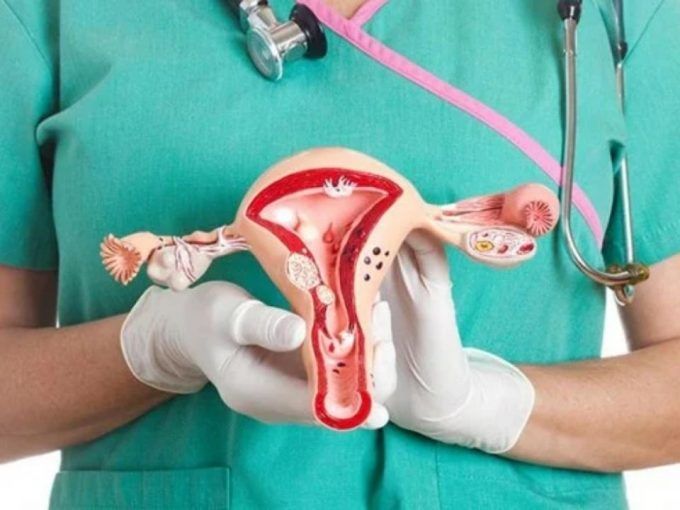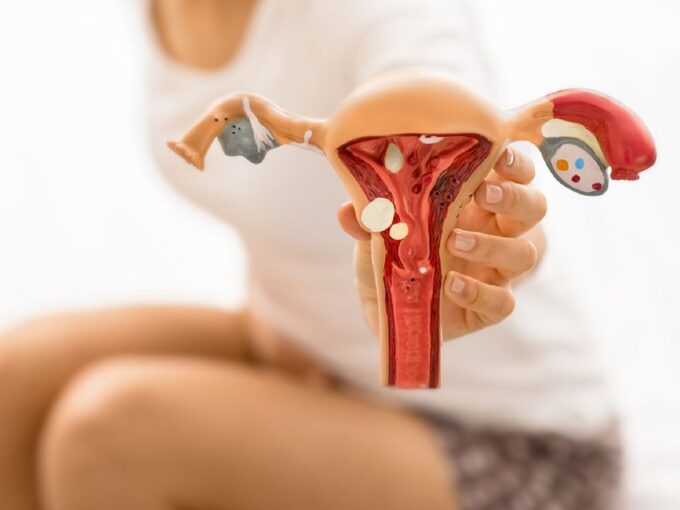Uterine myomatosis is the appearance of fibroids or fibroids, the most common solid tumors of the uterus in women of reproductive age. They are generally benign estrogen-dependent tumors. They are also called myoma, leiomyoma, or fibroma.
Epidemiologically, 2 out of 5 women who present with fibroids do not have any symptoms. They are not a common cause of infertility. For patients who have fertility problems, fibroids have a prevalence of 5-10%. Only in 1 to 2.5% of cases is it a cause of infertility. (1)
Among the risk factors that contribute to the development of uterine fibroids are nulliparity, black race, obesity, genetic factors, early menarche, alcohol, and caffeine. (2)
The classification of uterine fibroids is based on the relationship they have with the uterine wall, thus they can be subserosal, intramural, and submucosal. 95% of fibroids are located in the body of the uterus, and only 5% are located at the neck. Subserosal fibroids constitute about 10%, originate from the most superficial layers of the uterus, and appear to have no impact on fertility; Intramural fibroids constitute 60 to 70%, they generally do not distort the endometrial cavity, the effect on fertility is not clear or may be minimal when the endometrium is not involved. Submucosal fibroids have a frequency of 15 to 20%, they originate in the myometrium adjacent to the body or cervical uterine mucosa, exerting changes in it, they are the ones that most affect the chances of pregnancy and put an ongoing pregnancy at risk. (3)

The symptoms caused by uterine fibroids are related to the location and size of the tumor. In most cases, women with fibroids are asymptomatic. The main symptoms that women report are menstrual disorders, generally with abundant and/or prolonged bleeding that can lead to anemia, pelvic pain, dysmenorrhea, dyspareunia, pelvic heaviness, urinary symptoms, or digestive symptoms. Women with submucosal fibroids more frequently have fertility problems or spontaneous abortions. The explanations are:
- Impairment of mechanical sperm transport
- Alteration of uterine contractility preventing embryo migration
- Obstruction or alteration of the anatomical relationships for fertilization
- Alteration of embryonic implantation
- Alteration in the morphology and functionality of the endometrium
- Changes in endometrial receptivity
- Vascular disorders
- Hyperplasia
- Inflammation
- Atrophy
- Alteration of adhesion molecules
- Decrease in pregnancy rate and increase in spontaneous abortion rate.

The diagnosis is usually based on the finding of an enlarged, mobile uterus with irregular contours on physical examination or as an incidental finding on ultrasound. Imaging techniques are useful when it is necessary to confirm the diagnosis or locate the fibroid. Ultrasound is the most widely used diagnostic tool due to its availability and cost/effectiveness. Transvaginal ultrasound has a high sensitivity (95-100%) to detect fibroids in uteruses younger than 10 weeks. The sonohysterogram has greater sensitivity and specificity for submucosal fibroids since it detects the anatomical relationship between the fibroid and the uterine cavity. Magnetic resonance imaging gives better information on the origin of the fibroid. Hysterosalpingography is indicated to study the uterine cavity and the integrity of the uterine ruptures in patients with infertility. If the uterine cavity is normal, there is no advantage in performing a hysteroscopy. If the location of the fibroid is not clear in patients with abnormal uterine bleeding or in those seeking pregnancy, contrast-enhanced ultrasound (sonohysterogram) is the procedure of choice. If imaging studies do not provide an accurate diagnosis, surgical exploration is sometimes required. (5)
The treatment of uterine fibroids can be divided into medical and surgical. Medical treatment is associated with inhibition of ovulation, reduction in estrogen production or modification in estrogen and progesterone receptors. Surgical treatment is indicated or recommended in patients with abnormal uterine bleeding that does not respond to medical treatment, high suspicion of malignancy, growth after menopause, infertility with distention of the endometrial cavity or tubal obstruction, pain or a sensation of pressure that interferes with good quality of life, urinary frequency obstruction or disorder, and anemia related to abnormal uterine bleeding. (6)
New management presents an alternative to hysterectomy, both safety and effectiveness must be considered in each treatment. It must be recognized that all the new alternatives to hysterectomy allow the possibility of reappearance of undetected leiomyomas mainly because they are small, and may present significant growth, and require new treatment. The risk of recurrence must be balanced with the potential benefits of uterus-sparing procedures, such as decreased morbidity rates and fertility. (7)
During the first visit, our patients receive a complete evaluation and adequate classification, mainly in patients with fibroids that involve the endometrial cavity through endovaginal ultrasound, sonohysterogram, and, if necessary, a hysteroscopy. Avoiding at all times unnecessary surgeries that do not contribute to the reproductive goal and/or that put the integrity of our patients at risk. If submucous fibroids < 3cm are present, patients should be managed hysteroscopically. Removing subserosal fibroids is not recommended since they do not contribute to improving the reproductive goal. Patient selection should be individualized based on number, size, and location in addition to the surgeon’s skills. (8)
(1)-AAGL Practice Report: Practice Guidelines for the Diagnosis and Management of Submucous Leiomyomas, The Journal of Minimally Invasive Gynecology, 2012
(2)- Donnez J, Uterine fibroids management:from the present to the future, Hum Reprod Update, Nov 2016.
(3)-SOGC CLINICAL PRACTICE GUIDELINE, The management of uterine fibroids in women with otherwise unexplained infertility, March 2015.
(4)-AAGL Practice Report: Practice Guidelines for the Diagnosis and Management of Submucous Leiomyomas, The Journal of Minimally Invasive Gynecology, 2012
(5)-E., Pritts, Fibroids and Infertility: an updated systematic review of the evidence, Fertility and Sterility, april 2009.
(6)-SOGC CLINICAL PRACTICE GUIDELINE, The management of uterine fibroids in women with otherwise unexplained infertility, March 2015.
(7)-SOGC CLINICAL PRACTICE GUIDELINE, The management of uterine fibroids in women with otherwise unexplained infertility, March 2015.
(8)-E., Pritts, Fibroids and Infertility: an updated systematic review of the evidence, Fertility and Sterility, april 2009


